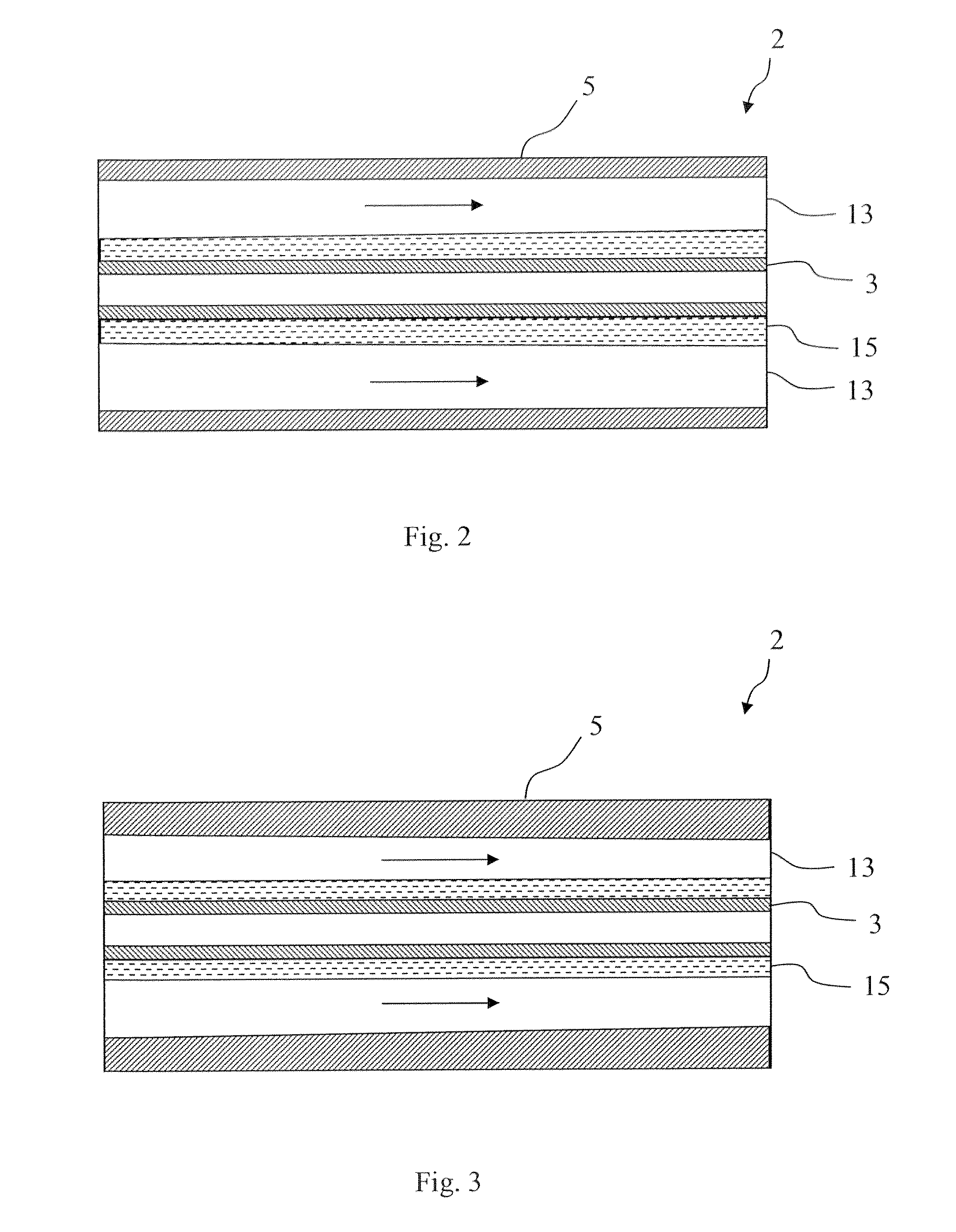Ozone Generator
a generator and ozone technology, applied in the field of ozone generators, can solve the problems of dust formation in the form of metal oxides, local temperature excesses, and deterioration of efficiency with increasing temperature, and achieve the effects of reducing gap width, cross-sectional, and increasing flow velocity
- Summary
- Abstract
- Description
- Claims
- Application Information
AI Technical Summary
Benefits of technology
Problems solved by technology
Method used
Image
Examples
Embodiment Construction
[0030]In FIG. 1, an ozone generator is shown by way of example which comprises a housing 1 in which a number of essentially tubular electrode arrangements 2 is provided. Each electrode arrangement 2 has an inner electrode 3 and a tubular outer electrode 5 which is arranged concentrically about the inner electrode 3. The inner electrode 3 is arranged on several essentially cylindrical electrode supports 4 arranged behind one another seen in direction of flow of the gas. The inner electrodes 3 are connected with a high-voltage alternating-current source 6. The outer electrodes 5 are grounded. The gaps 7 between the electrode arrangements 2 are rinsed by cooling water which is supplied via an inlet line 8 and removed via an outlet line 9. The oxygen-containing gas to be ozonized, which can also be pure oxygen, is supplied via an opening 10 into an inlet area or input area 11 of the ozone generator, from where it flows through the ozonizing gap 13 formed between the inner electrodes 3 a...
PUM
| Property | Measurement | Unit |
|---|---|---|
| gap width | aaaaa | aaaaa |
| gap width | aaaaa | aaaaa |
| gap width | aaaaa | aaaaa |
Abstract
Description
Claims
Application Information
 Login to View More
Login to View More - R&D
- Intellectual Property
- Life Sciences
- Materials
- Tech Scout
- Unparalleled Data Quality
- Higher Quality Content
- 60% Fewer Hallucinations
Browse by: Latest US Patents, China's latest patents, Technical Efficacy Thesaurus, Application Domain, Technology Topic, Popular Technical Reports.
© 2025 PatSnap. All rights reserved.Legal|Privacy policy|Modern Slavery Act Transparency Statement|Sitemap|About US| Contact US: help@patsnap.com



